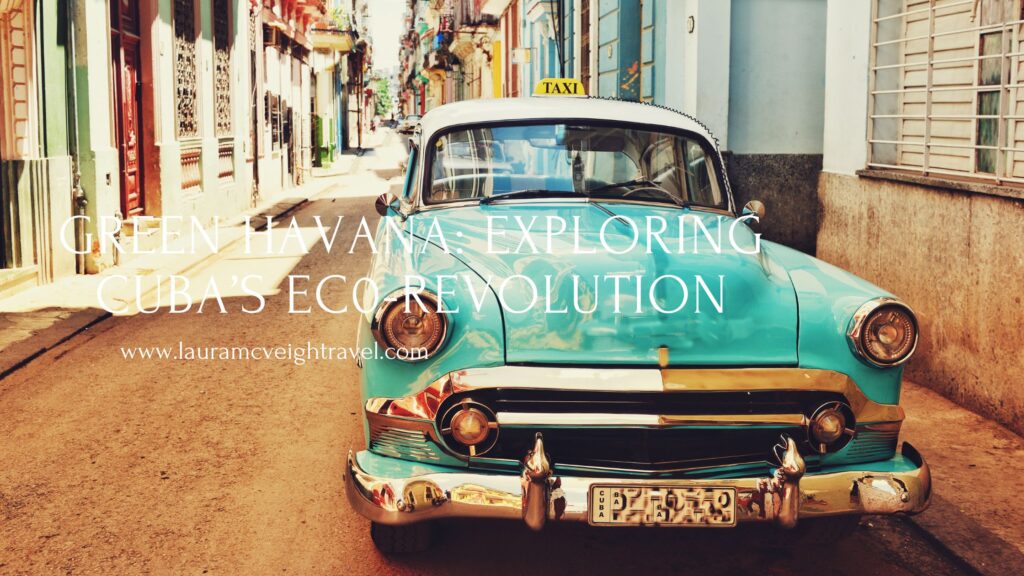
There are two Cubas: the Cuba of the imagination, and then there’s the Cuba I remember. Twenty years ago.
The imagined version was shiny, idealistic, full of 1950s glamour. It’s all revolutionary zeal and Hemingway, brightly-coloured Cadillacs and palm trees.

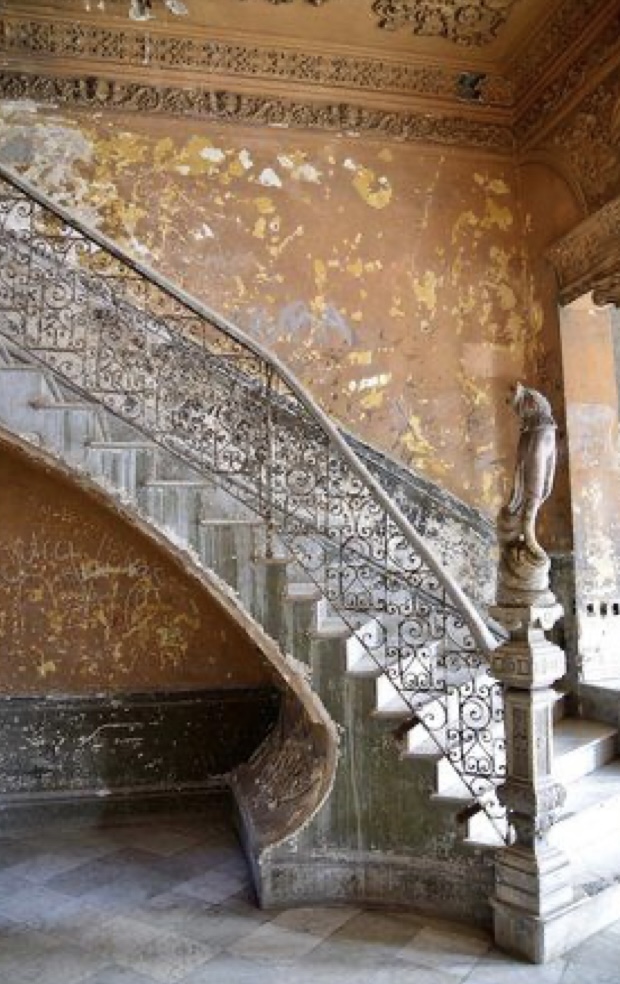

The Cuba I remember is not quite the same. There are wind-battered palm trees on the Malecón, Havana’s pastel-hued seafront promenade. Now, up close, the rose pink, sunflower yellow, mint green and baby blue colonial-style buildings show weathered signs of salt spray erosion, as the colour peels away in layers from the walls. The Cadillacs are there, taxis mostly, some a bit rusty and looking the worse for wear. Hemingway is an entire tourist trap – mainly based out of El Floridita (order a Papa Doble if you want to go all in), La Bodeguita del Medio (mojitos, live traditional music and tourist hordes), or at Hotel Ambos Mundos on Obispo in Old Havana, where the clock stands still in Room 511 and we’re on Hemingway-time 1930s-style. And Castro, well he floats over everything, like a 1950s ghost.


Havana is a hey-day that’s been and gone.
The tour-guide, José Luis, who takes us round on a walking tour of Havana, speaks perfect English with a soft Miami cadence. He’s a doctor but he makes better money with the tour groups (average monthly salaries can be around $30 USD so tourist dollars go a long way). And besides, he says, “someone has to remember all our history and share it”. He’s obsessive on politics and history, affable and unflappable at first, but as the morning wears on, the beads of sweat form on his forehead, and his voice tightens. He is overwhelmed with it all. ‘No es fácil,’ he says, apologetically. It’s not easy.
Through some ironwork gates I spot a tumbling garden at the back of a once-grand mansion house. The yard is alive with a riot of bright red hibiscus flowers, walls covered in vibrant pink bougainvillea. A lush mix of orchids and palms cluster near the sides. I lean in to get a closer look. The scent of jasmine fills the air, mixed in with salty sea breeze. Cheerful dings of bicycle bells ring out as cyclists swerve to avoid our small group, their sound muffled by the backdrop of the waves crashing rhythmically against the Malecón walls. Somewhere nearby someone is playing son, the beats tumbling from an open window. There’s a stickiness to the day in Havana, humid despite the sea air. A man is sitting on a beat-up sofa outside in this garden under the shade of a mango tree. He’s fixing an old television set. I watch intrigued before José Luis calls me back to the group. “Here we recycle everything,” he says. If it breaks, you fix it.
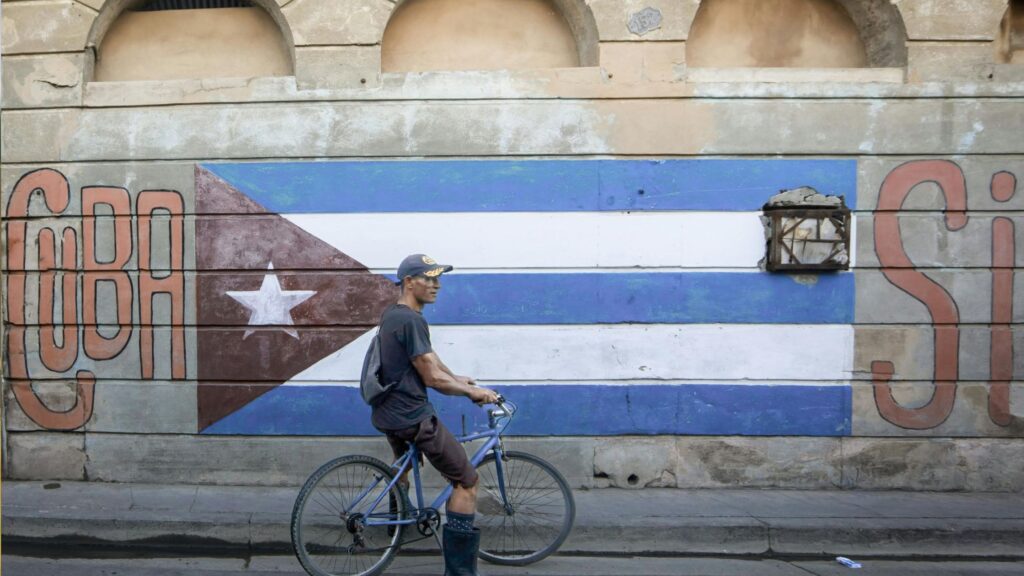
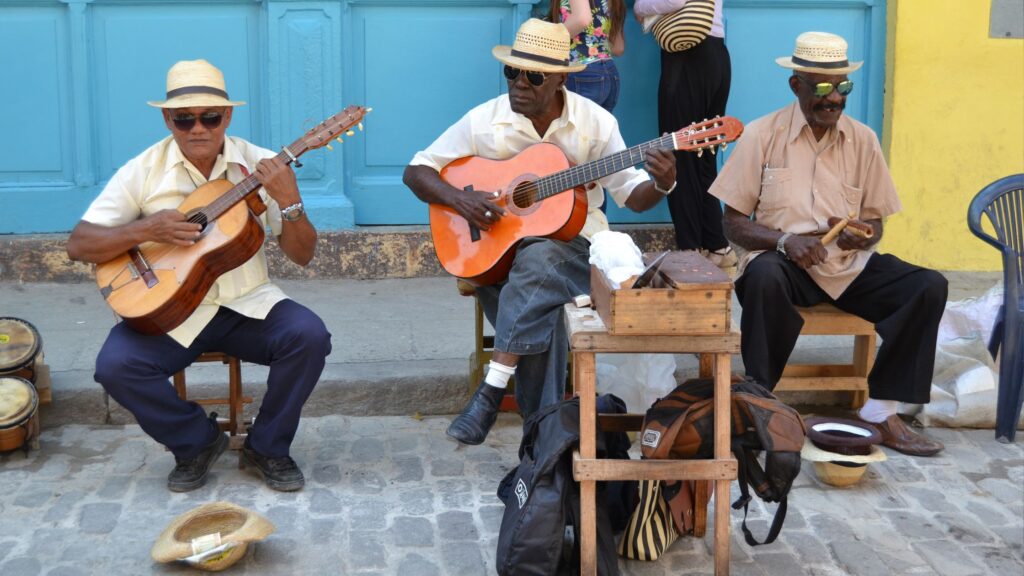

This is the Cuba I remember. Where nothing goes to waste. So it’s no surprise to me that twenty years later Havana is undergoing an eco-revolution of sorts in community tourism. All the signs were there back then. People renting out rooms in their houses, fishermen taking you out on trips as they worked (obsessively promising lobster always – a symbol then of the good life gone), people sewing their clothes themselves, ride-share Chevrolets, Ford Fairlanes and 1950s Cadillacs just business-as-usual. There was an economy, forced out of necessity, based on reciprocity and barter. Someone has a chicken, they’ll give you some eggs in exchange for sending a tourist their way to sleep in that spare room at the back. And on it goes.
Community is big in Havana. People help each other out. Families often live in multigenerational homes. Neighbours are closely bonded. Chats happen in doorways, on rooftops and on the street, news passing from one neighbour to the next.
Hustle culture is a thing. But it’s Caribbean-paced hustle. More of a soulful son cubano pace than a wild timba. Everyone figures out their role in the ecosystem. You have to be resourceful to get by. ‘Food, fuel, medicine are often in short supply so you have to work around it,’ Gloria, a home stay host, tells me with a patient smile.
Expect transport delays, power outages, water supply issues. Internet access is limited.
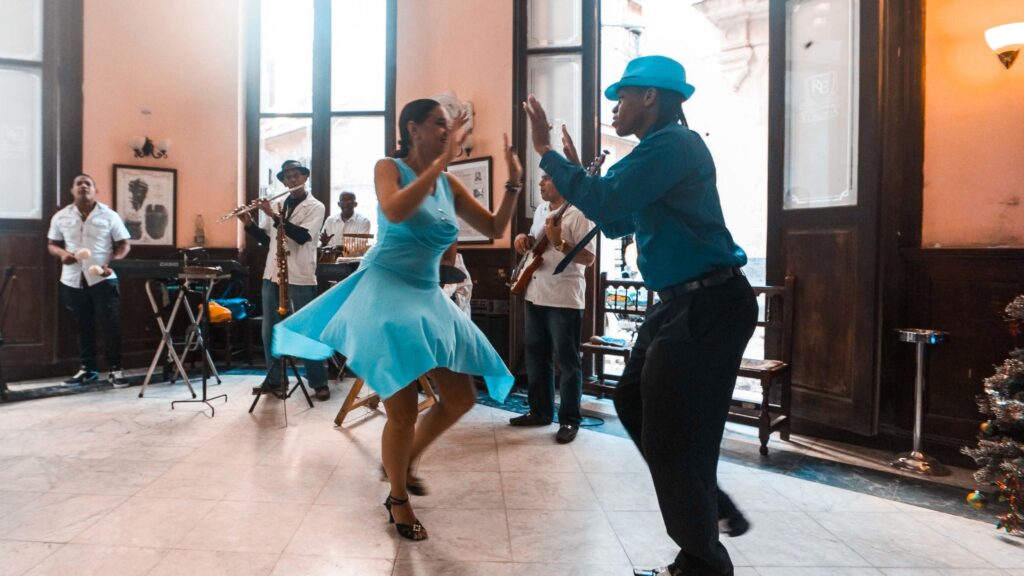
One of the things that struck me most twenty years ago was the reluctance locals had to speak out (with tourists at least) about the problems they face – a mix of pride and a fear of political reprisals. That sensitivity remains twenty years later, though younger generations are speaking out.
Despite all the challenges and hardships, Habaneros are rich in social capital. There’s a vitality to Havana culturally – be it in music, dance, art or theatre.
These days you can stay in private homes, go on tours to organic farms or artist workshops, eat home-cooked meals in pop-up restaurants (paladares) and take dance lessons at the Casa de la Musica (try Centro Habana to polish salsa, son and bachata steps), a quintessential community-driven space. Or try La Casa de la Cultura, or La Casa del Son – both dance hubs for locals and travellers alike.
There’s a whole community-based industry of agroecology (visit the Agropecuario markets to learn about Cuban food sovereignty and sustainable farming). Or enjoy walking tours and eco tours that focus on environmental education. Hire a bike and cycle round. If time permits, you can even volunteer with community-based green tourism projects – the locals are friendly, there’s a sense of solidarity, and you’ll be welcomed in. Want to take the pulse of the city? Take a share-cab and swap stories with the local passengers.

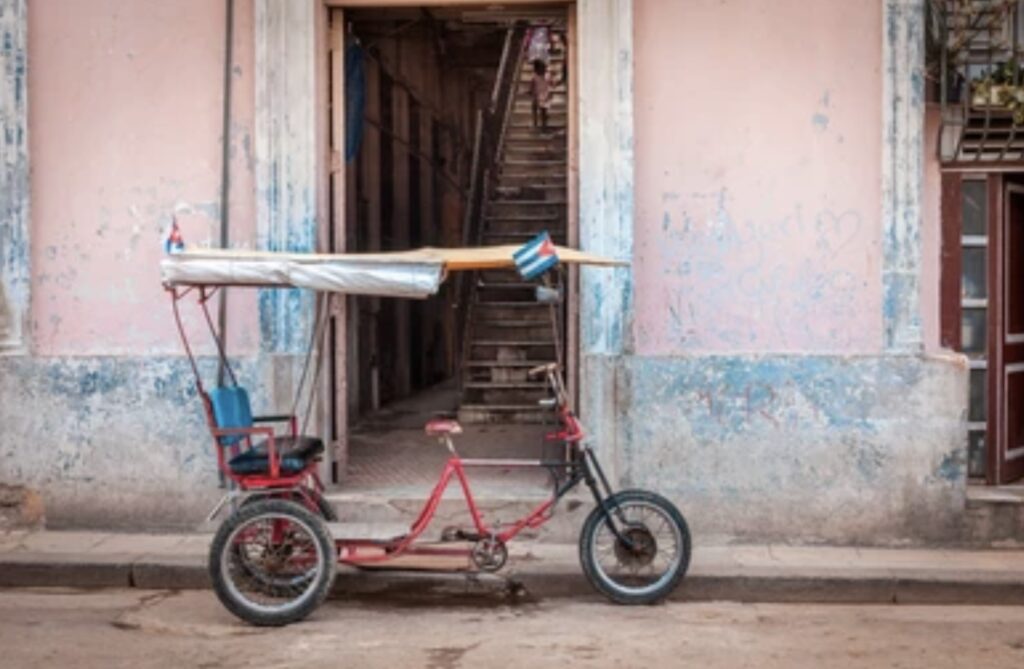

The Cubans I meet are a mix, some quietly bitter about Castro and all that followed, others proud of their country and culture, some nostalgic, some eager for change. Often people tell you what they think you want to hear. I learn to listen to the things they don’t say, to watch the way they redirect us gently if conversation hits an off-pitch note – always with a smile.
Ceci runs a paladar in her home. She serves up ropa vieja, slow-cooked beef with tomato sauce seasoned with onions, garlic, peppers, cumin and oregano. Classic Cuban comfort food, served with rice or fried plantains (tostones). ‘It’s not easy,’ she says, ‘but we make it beautiful anyway, we make it work. It’s just life.’ She smiles.
I think about how many times I hear that phrase repeated: It’s not easy. This understated and frequently used verbal shrug sums up the undercurrent of challenge in everyday Cuban living. It’s tough yet people carry on.
After all, here they recycle everything. As the man says, ‘if it breaks, you fix it.’
Top Tips: Green Havana
STAY
Private home stays (casas particulares) are a good way to see ‘Green Havana’, embracing a more community-based approach. Look for accommodations that utilise solar energy, recycle waste, and source food locally. This is a good way to experience an authentic sustainable tourism stay. Look out too for the blue-and-white ‘Arrendador’ sign to check the homestay is licensed, complies with regulations and is a safe place to stay.
Havana Vieja (Old Havana – a UNESCO World Heritage site, popular area), Centro Habana (local, less touristy but near the old town), Vedado (leafy streets, trendy cafes, quiet residential vibe) and Miramar (upscale, residential, colonial-style houses with gardens) are all good neighbourhoods to stay.
Combine a city-stay with a trip out of town to Hotel Moka in Las Terrazas within the UNESCO Biosphere setting of Sierra del Rosario. The hotel has embraced nature in its quirky architecture, with existing trees simply built around rather than uprooted. Enjoy peaceful, lush views over the valley from the greenery-enveloped hotel. Here you’ll find a community rooted in sustainability, terraced landscapes and eco-tourism projects. It makes a good base for hiking, kayaking and exploring just an hour’s drive from Havana (or 3 hours by bus or train).
VISIT
Parque Almendares
A green lung in the Vedado neighbourhood, full of trails alongside the Almendares river. Popular with picnickers, and those seeking respite from the heat of the city.
Jardín Botánico Nacional
With over 4000 plant species, palm collections and a Japanese garden, spread over 600 hectares, the Botanical Garden is an educational gateway to learning about Cuba’s flora.
Organopónico Vivero Alamar
An organic farm in East Havana. Visitor tours available in this urban farm setting to see organic community farming in action.
EAT
El Romero (in out-of-town Las Terrazas) serves up organically grown produce in vegetarian and vegan dishes – all sourced from the community’s gardens. Strong emphasis on sustainable practices and a seasonal menu.
Yucasabi
Try casabe, the gluten-free, vegan flatbread made from yucca root in Old Havana’s Yucasabi.
Visit the paladares for home-cooked food and local community vibes.
LEARN
Visit the Taller Experimental de Gráfica in Old Havana – a printmaking workshop where visitors can watch artists at work and buy eco-friendly artworks.
Gaia Arts Center is a collaborative arts space bringing together Cuban and international artists for a wide range of performances and exhibitions – often incorporating environmental themes.
READ
Delve into La Librería, a bookshop in Vedado which specialises in Cuban literature, and also has books on themes like ecology and sustainable living. Browse the books over a cup of local coffee.
Load up the Kindle with ‘Dreaming in Cuban’ by Cristina García (lyrical, magical realist take on fractured lives of a Cuban family through the generations), ‘The Old Man and the Sea’ by Ernest Hemingway, ‘Telex from Cuba’ by Rachel Kushner (a compelling historical take on expat living in Cuba during the revolution). Dive deep into the country’s history with ‘Cuba: An American History’ from Pulitzer Prize-winning Ada Ferrer, Cuban Revelations: Behind the Scenes in Havana’ by Marc Frank, a journalists take on life in post-Soviet Cuba.
LISTEN
Time your visit with the Havana World Music Festival, held annually and hosted in Parque Almendares, the festival promotes sustainability and cultural exchange.
Fill your travel playlists with soulful music from Compay Segundo (of Buena Vista Social Club), Ibrahim Ferrer, Celia Cruz, Beny Moré and Silvio Rodríguez.

Laura McVeigh is an international bestselling author and travel writer. She has authored books for Lonely Planet, DK Eyewitness Travel and leading publications. Her work has been featured by Newsweek, BBC, Traveller Magazine, New Internationalist and many more. Her writing has been translated worldwide. She is Founder of Travel-Writing.com – helping aspiring travel writers build careers they love, and Publisher of Green Travel Guides – www.greentravelguides.world – exploring green, slow and sustainable travel. She also loves to write about the art of storytelling and writing with purpose.
Learn more about Laura’s writing at: (fiction) www.lauramcveigh.com | (travel) www.lauramcveightravel.com